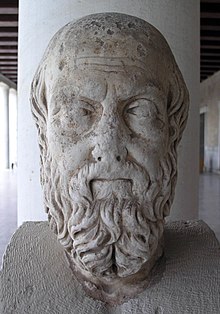2.1: History
- Page ID
- 5288
Early Cultural Studies
Herodotus

Herodotus could be considered one of the earliest anthropologists in Western tradition, and his work can be regarded as some of the earliest anthropological studies. He “sought to understand other people and cultures by traveling far and wide.” [6] Even though he did not practice anthropology like it is practiced today, he created a rather unbiased, truthful recording of other cultures’ legends and lifestyles by using second-hand and third-hand accounts relating to his primary subjects, as well as traveling throughout the Mediterranean.
“Herodotus of Halicarnassus here displays his inquiry, so that human achievements may not become forgotten in time, and great and marvelous deeds- some displayed by Greeks, some by barbarians- may not be without their glory.” –Opening sentence, The Histories, Herodotus
In his nine scrolls known as The Histories, written in the later period of his life (430 BCE), Herodotus describes the conflict between the Greeks and the Persians, but he often digresses from his topic to describe what he had learned through interviews of the Scythians, who lived near the Black Sea. He learned about and recounted information on how the Scythians lived, and he also learned about nomads who lived further north than the Scythians. Even though the information he recounts was translated many times before transcribed, artifacts similar to the ones he describes have been found in modern excavations in Russia and Kazakhstan.


